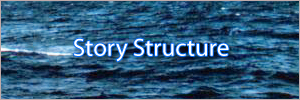



Fall 2005


The depiction of the lifeboat and Pi’s survival is amazing. Every word was appropriate as Martel described Pi’s willingness to overcome hunger and thirst. The tale provided readers with questions as to how they themselves would empathize and deal with the situation. Martel discussed animal behaviors, which added depth to Richard Parker as an accessory character in the story, committing his presence to memory as the audience reminds themselves that while they handle basic necessities for survival, ,a large tiger also takes up part of the space in the boat.
The consideration for the story of Pi as truth is a quandary. The book has two separate pieces. There are two stories where the reader must decide whether the first part or the second story Pi tells to the creditors from the shipping company to give a more plausible story was the truth. This book is a novel. Martel structures his author’s note to appear that there are people he actually acknowledges in an effort to increase the truthful elements. However, there is the fact that the story changes voices in the story. One Yann Martel begins with his transition into the story developing on Indian culture and that he visits the place and considers its exotic feel intriguing; he comes across a person knows the Patel family well—this man wishes to tell the story of a boy named Piscine “Pi” Patel.
Then the story becomes more personal and specific with the details of the survival in the lifeboat. However, an argument can be made that Martel took the story and shaped it into his own way. Instead of the title Life of Pi the story should have the title Life of Martel, because Pi’s story is not as honest due to the influence of Martel and the friend of the family he interviewed to hear about the story. In addition, Martel switches points of view to make the interesting connections with Pi and Richard Parker. Some connections show Richard Parker as Christ, always coming back and being a huge presence in the lifeboat. Their bind displays deeply religious overtones.
Religion sits in the center of the story. Martel develops the story as a process for Pi. He comes from an interesting background, which shows how religion plays a huge role in the transcendence of the characters. The plot develops from withstanding the bare necessities for survival: experience hunger, thirst, and fatigue. Obviously part of the message is that religion survives the torrential bitterness of nature—strong faith can overcome any major obstacle. This could be said of the connection of all three religions, but really Pi’s interest in all the religions could possibly be his need to find answers where there is nothing to give him answers for what he has to endure. Yet the structure of the novel paints a different expectation: the way the novel questions more than answers; the juxtaposition of opposite elements like zoology and religion; and how Martel chooses to close the book paint a very different sight for the book.

